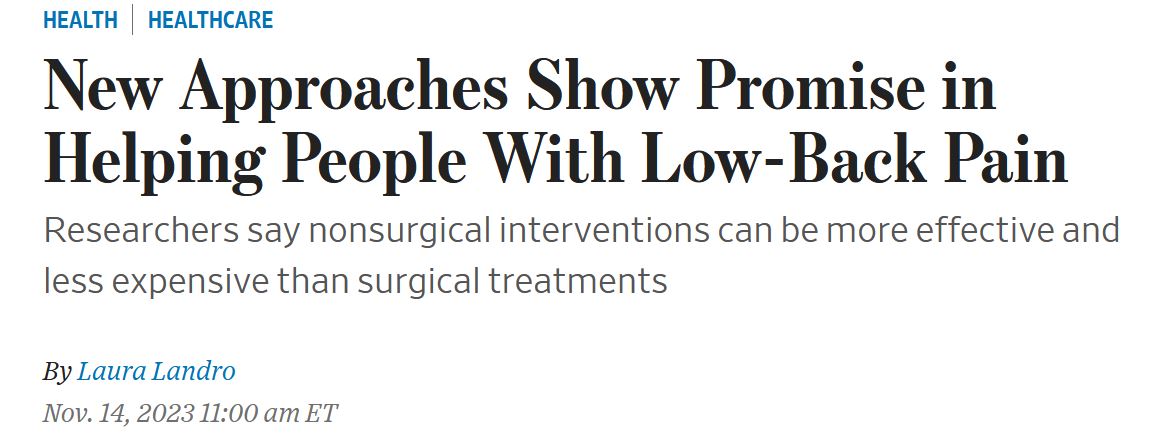
WSJ: New Approach to Back Pain
WSJ: New Approach to Back Pain
It seems like everyone I know has suffered from a bout of lower back pain. What we used to call Lumbago, and is now, often called Sciatica.
Symptoms may range from a twinge when remaining in a particular position too long up to being unable to move without excruciating pain. Every doctor had the patient go through the same process.
Let’s try stretching exercises, then medicated patches, moving on to steroid shots. Hopefully, the problem resolves itself by that point. Surgery is the last resort.
Common causes include injury, arthritis and degenerative changes in the spine. It tends to start at midlife with the natural wear and tear of aging. But often there is no clearly identifiable physical cause, leaving patients to veer from one ineffective treatment to another—including highly addictive prescription opioids.
The patient doesn’t veer, the doctors do.
Studies have shown that nonsurgical approaches can be more effective and less expensive than surgery.
I’ve known two people who progressed to back surgery. Both had a full recovery with no return of symptoms. Both were tall guys who were college athletes.
In a study at multiple sites nationwide, researchers are testing the effectiveness of four nonsurgical treatments in connection with specific personal traits of patients. Each treatment has been shown to work, though not equally well for everyone.
The four treatments: acceptance-and-commitment therapy, which helps people learn new skills for dealing with pain; duloxetine, a medication used for depression, anxiety and chronic musculoskeletal pain; an online program with personalized messages to teach lifestyle skills for pain management; and a form of exercise therapy with stretches, strength training and hands- on treatment by a physical therapist or chiropractor.
Three of those treatments would feel like the doctor isn’t doing anything.
In the first clinical trial of PRT [Pain Reprocessing Therapy], co-led by Ashar, 151 people with mild to moderate back pain were randomized into three groups. One got four weeks of intensive PRT, one received a placebo saline injection in the back, and one received care as usual. With PRT, 66% reported being pain free or nearly so after treatment, while only 20% of people who had the placebo and 10% of those in usual care reported similar improvements.
It’s pretty obvious that the medical community doesn’t understand back pain or how the spine works. Training people to live with the pain is not a decent answer. Better research is needed to determine what treatments will work for specific causes.
Leave a Reply